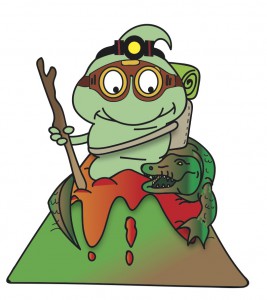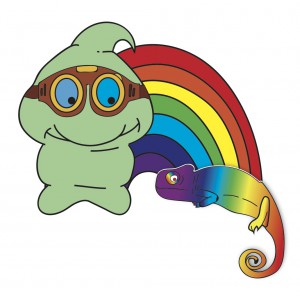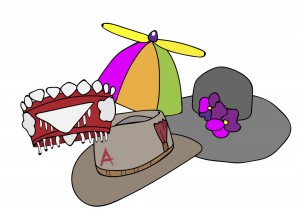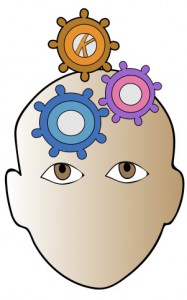I was watching an ad for a program on Australian TV that was showcasing young students and their proficiency as spellers. I found myself a bit distracted by the concept and found myself asking the question “so what?”
This question wasn’t prompted by a disparagement of the young spellers and their significant spelling skills or a disparagement of the parents wanting to support their child in displaying their spelling skills in a competition.
It did for a time have me wondering about students and their parents who may not have a significant academic skill to showcase and how this may have invitations to ideas of failure lurking in the shadows, but I left that wondering for a later time.
What it had me thinking about was how different schools approach teaching and learning and what informs these different approaches where each teacher, school and curriculum views learning from a unique perspective.
Some academic systems see learning as skill based, (the how of learning). Learning is viewed as a chance for learners to develop and become proficient at different sets of skills in key subject areas. Skills are taught, applied and tested and proficiency is the measure of success. This process often makes it difficult for the student to see the relevance of the skills and the ability to transfer, apply or use these skill flexibly in order to solve real life problems, face real life challenges or adapt the skills to take advantage of new opportunities. Skills are dynamic actions that have relevance in specific contexts and time frames. Learners need to understand how to adapt, change and acquire new skills, not just acquire a set of predetermined and possibly future-limiting actions.
Some academic institutions see learning as fact based, where the recall of knowledge and details (the what of learning) is the primary concern of the teaching and learning process. Knowledge, facts and details are accessed, rote-learned, recalled and used to answer questions. However knowledge and facts change as new discoveries are made and facts and details can be easily accessed from various sources, this approach limits the learner’s ability to use knowledge to explore, engage with or use these facts and details in new ways or for new purposes.
Some academic institutions see learning as a process, where learners are invited to explore how they learn. It begins to incorporate skills and knowledge together, but also supports learners in developing a language of learning. This process begins to scaffold learners’ choices in using skills and knowledges in new ways. However unless learners are invited to engage with the ‘so what’ of learning, this process can be limiting in terms of people using learning to engage in real life opportunities and challenges.
Learning that is based in bigger picture understandings (the why of learning) and invites discovery and acquisition of skills, knowledge and the language of learning, becomes a combination of ideas and strategies that begins to set learners up to become agents in discovery and action-taking as well as meaning making.
Taking this one step further and means valuing and having processes and strategies that include learner, voice and choice, the interests and attitudes of leaders becomes a key pillar in relevant, meaningful and engaging learning opportunities. Valuing and inviting learners to engage and explore the attitudes and positions they take during the learning process can enrich options and choices in an ever-changing world. Learning is no longer based in the head, it becomes a tool for becoming a person who has agency, a bank of flexible and relevant strategies and approaches for taking action, a tool for meaning making and interacting with an ever changing world. Learners develop skills, knowledge and understandings by being invited to name and explore the how, what and why of learning, while also being invited to engage with the ‘who’ of learning.
A step that further enriches this process is bringing forward and connecting to the interests of learners. By engaging in this way teachers create opportunities where a learner can engage with new possibilities by building a bridge from their prior knowledge. It encourages a scaffolded learning process that values and extends where learners are coming from, to where they might want to go.
The BCW model of I ASK U values all the elements of learning and sees them as critical to supporting wider world. It is about valuing the relationships one has with one’s self, with others, with ideas, spaces and possibilities and using these valued positions and relationships as ways of exploring the world, facing challenges, taking action, problem solving and posing and being open to new possibilities and opportunities. All our resources are and strategies are developed within this framework and the narrative frameworks of making visible the roles of relationships with ideas, places and others in learning and valuing the insider knowledges all learners bring with them to a learning community. The positioning possibilities resources and strategies are the beginning of our resources that support a more narrative approach to supporting learners.
The I ASK U model
I: Interests- (The WHO of learning) – Choice and Voice: Supporting agency and choice in the learning process.
A: Attitudes- (The WHO of learning) – Relationships: The relationship or positioning possibilities learners’ might have with beliefs, ideas and perspectives of being a learner.
S: Skills: (The HOW of learning) – Processes and strategies: Skills and strategies that support learners’ engagement in the learning process.
K: Knowledge: (The WHAT of learning) – Knowledge and facts: Details, facts and knowledge about a topic or process.
U: Understanding: (The WHY of learning) –Concepts and big ideas that cross time and place : Supporting learners’ meaning making and enabling learning to become portable in problem solving situations.
Positioning Possibilities – An introduction
POSITIONING: Why bother?
- By encouraging students to ‘try out’ positioning increases their response range and helps students move away from a single-minded approach and a preference for staying with the familiar, to embracing a wide range of responses for complex situations
- ‘Trying out’ positioning supports students to understand that there are many ways to make sense of the world, thus increases capacity of and appreciation for other’s lives and ways of being in the world
- When students practice changing positions it liberalizes thinking and offers them a chance to engage with the previously unthought thus facilitating choices that include new ways of acting and thinking
- Positioning is an invitation to process-oriented learning, which provides more entry points for student participation as outcomes are left open and process and possibility are the focus of engagement
- Process-oriented learning, using positioning, fosters a life long curiosity and a willingness by students to engage with possibility, rather than an invitation to adhere to hoop jumping which is laden with potential sites of failure
Stay tuned for more information on positioning. Meet Poz, the icon for positioning possibilities. Here are some of the possibilities of positions learners could be invited to take when facing opportunities, challenges and problems…
 Delighting Poz
Delighting Poz
Being open and alert to the unexpected in a joyful way. Excitement, gleeful, bobby-dazzler, happiness, gladness, amusement, bliss, transporting, marvel
 Crafting Poz
Crafting Poz
Combining or working with old ideas and skills to craft new possibilities. Ability to work with, bring flair to, be artfully tricky, genius, cleverness, capable
 Contemplating Poz
Contemplating Poz
Look thoughtfully for a long time at, think deeply and at length. Dwell on, weigh up, puzzle over, ponder, muse, behold, imagine, visualize, consider, meditate on, be mindful of, think about.
 Adventuring Poz
Adventuring Poz
Quest, exciting, venturing out, unknown, mission, hazards, prepared
 Adapting Poz
Adapting Poz
Willing to adapt, modify, remodel, flexible, irrepressible, resilient, buoyant-





